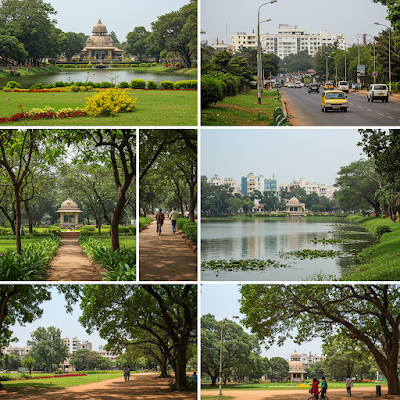These are fascinating places where animals from all over the world live in specially designed enclosures. The concept of zoos dates back to the early 19th century, with the London Zoo opening in 1828 as one of the first modern examples.
What makes zoological parks truly special today is their shift from mere animal exhibitions to centres of conservation and education. Many zoos participate in breeding programmes to help endangered species survive and even reintroduce them into the wild.
They also provide interactive learning experiences, helping visitors understand the importance of biodiversity and environmental stewardship. Plus, zoos often conduct research that improves animal welfare and conservation strategies worldwide.
Now, if you’re in Bengaluru or planning a visit, one of the most remarkable zoological parks you should check out is the Bannerghatta Biological Park.
It is a massive wildlife spot covering 731.88 hectares, packed with exciting attractions like a zoo, safari, butterfly park, and a rescue centre for animals. It's one of the biggest zoos in India.
Established in 2002, the biological park sits within the larger Bannerghatta National Park, which was founded in 1970 and declared a national park in 1974.
THE ZOO
Back in 1971, what started as a small "Picnic Corner" gradually became a full-fledged zoo, giving the people around Bengaluru a great spot to enjoy nature and wildlife.
Today, it’s home to a mix of Indian and exotic animals — 1,941 of them, across 94 species! You can see mammals, reptiles, and birds living in carefully designed enclosures. Some of the most exciting ones include Thamin deer, Hog deer, King Cobra, Crocodiles, Himalayan black bears, Panthers, and a variety of birds.
Visitors also have access to a museum and an auditorium to learn more about these fascinating creatures.
Right now, the zoo spans 12 hectares, but it’s growing — another 28 hectares are being added, along with eight brand-new enclosures. More space, more animals, more to explore!
The safari allows you to see animals like tigers, lions, bears, elephants, and even leopards in environments that closely mimic their natural habitats.
Aside from the safari, the butterfly park is a colourful delight, showcasing a variety of butterflies and insects, which adds an educational and aesthetic touch to the visit.
The park also offers nature camps for those keen on studying flora and fauna more closely, making it a fantastic spot for families, students, and wildlife enthusiasts alike!




















